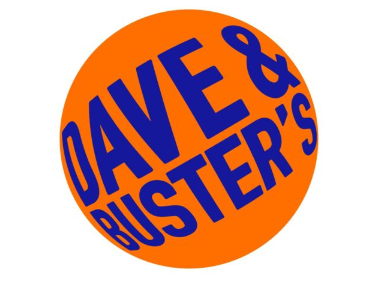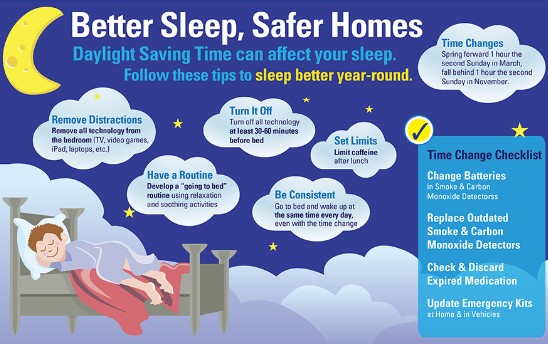Health News & Recipes



Takeout Tips: Order This, Not That

Who doesn't love a night off from cooking? Ordering take-out is fun (and delicious) for the whole family, but oftentimes, we give in to our guilty pleasures and don't always opt for the healthiest menu items.
But we've got good news. You CAN have the best of both worlds by changing up your normal food selections and swapping them for more health-conscious items.
Here are some tips.
Italian: Did someone say pizza? We're already drooling. Make your pizza healthier by opting for thin crust when it's an option. You might even have the option to choose a cauliflower or gluten-free crust. When it comes to pasta, tomato-based sauces typically have less saturated fat than creamy options like carbonara.
Mexican: Craving tacos? Skip the sour cream. We promise it will still taste good. If you're choosing beans as a side, go for whole beans over refried beans. Refried beans are sometimes made with added lard. If you love burritos, opt for a veggie bowl instead—it has nearly all of the same ingredients as a burrito with the benefits of added veggies, minus the tortilla.
Thai: Spring rolls are yummy, but they're usually fried. Choose summer rolls instead as they're steamed and packed full of veggies. If it's on the menu, give a green papaya salad a try for something unique!
Chinese: Many Chinese take-out dishes come with a side of rice. Instead of choosing white, go for brown, which has more [fiber] and micronutrients. You'll likely see that many meat (and maybe even veggie) options on the menu are fried. Choose a steamed option instead, with any sauce on the side.
American: Regular burgers are often loaded with saturated fat. Instead, give a black bean or veggie burger a try. You can still add your [favorite] toppings, like lettuce, onion and tomatoes. While we can't tell you French fries are healthy, choosing sweet potato fries over those made with russet potatoes do offer more nutrients. Craving a bowl full of comfort? Typically, broth-based soups are healthier than those made with a cream base.
Yours in Health,
Dr. Lisa A. Grassam-Smith
(772) 286-5433

Caregivers Caring for Dementia Patients Get Help from
Council on Aging Martin County

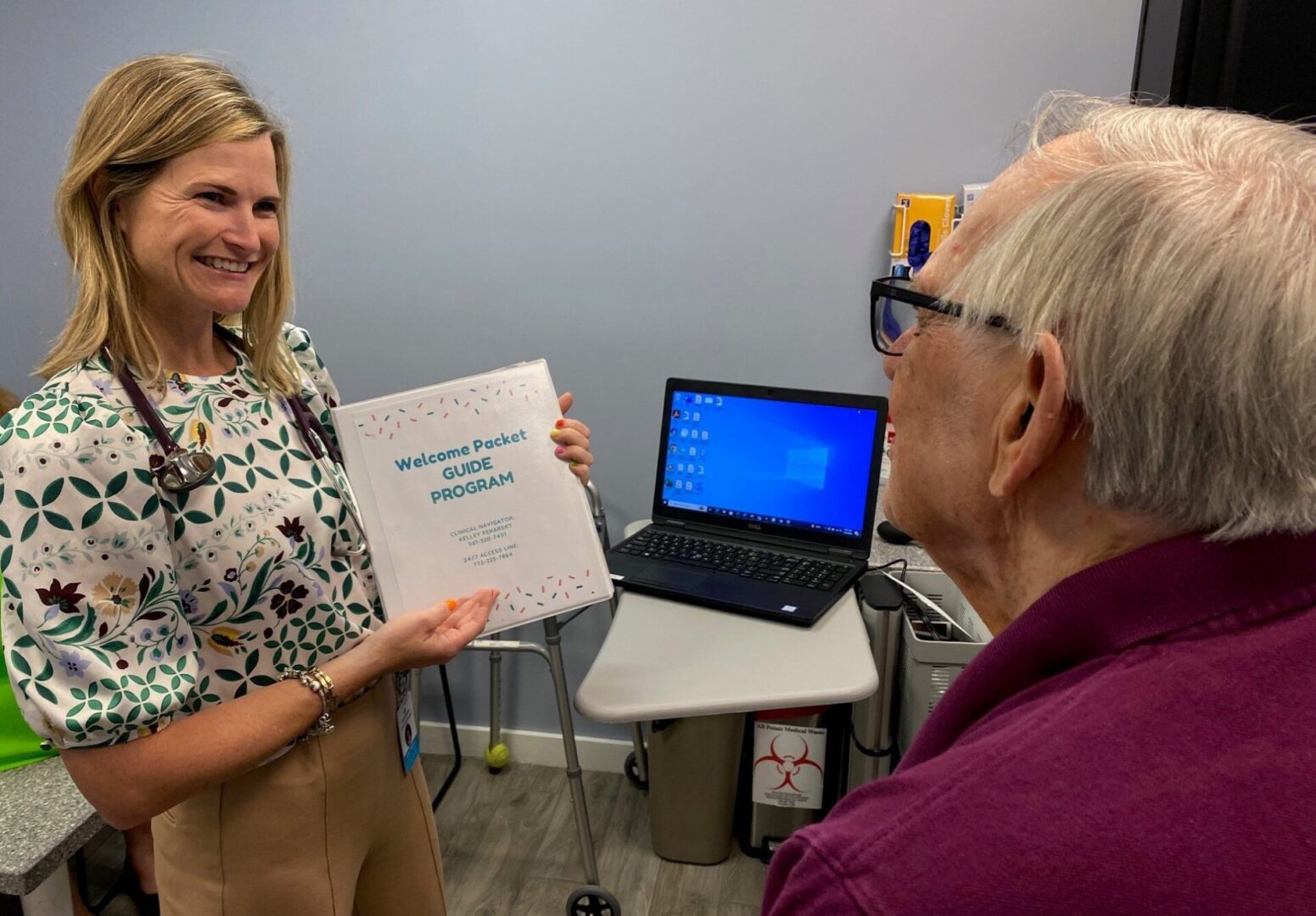
Stuart - Caregivers of dementia patients face physical, mental, emotional and often financial challenges to keep their loved ones safe and comfortable. The Council on Aging Martin County now offers a program, called GUIDE, that helps the caregiver as well as the patient and even provides funding for respite care.
“We know how difficult it can be for individuals with dementia and their families to find the resources they need and to feel confident in the choices they’re making,” said Council on Aging Martin President and CEO Karen Ripper. “Our GUIDE program enables us to bring our community even more ways of caring for loved ones with dementia and supporting their caregivers.”
The goal of the program is to enable people to stay safely at home and out of the hospital or a nursing home. That requires education, coordination with the patient’s primary care provider and specialists, a rich array of community resources to draw on like Meals on Wheels and the Circle of Safety Bracelet, and a strong layer of support for the caregiver.
Through the GUIDE program, patients on Medicare can receive up to $2500 a year for respite care. This extra bit of financial help enables caregivers to take temporary breaks and renew their health and spirit. They can use the funds for in-home help or for more frequent assistance like the Day Club on the Council on Aging’s Kane Center campus. These funds, and the GUIDE program, are available to Medicare patients throughout Martin, St. Lucie and Northern Palm Beach but are not available to patients enrolled in a Medicare Advantage Plan or hospice.
Those enrolled in the program also have access to a 24/7 hot line. “Having someone always available to listen can be very meaningful to a caregiver,” said Kelley Pekarsky, Nurse Practitioner at the Council on Aging Martin County’s Day Primary Care Center and the program’s Clinical Navigator. “Thanks to the GUIDE program, there is always somewhere to turn, and someone who can give support and knowledgeable advice.”
For more information about the program, call 561-320-7451, call the Council on Aging Martin County at 772-223-7800, or visit the website www.coamartin.org.

HEALTHY RECIPES 2024
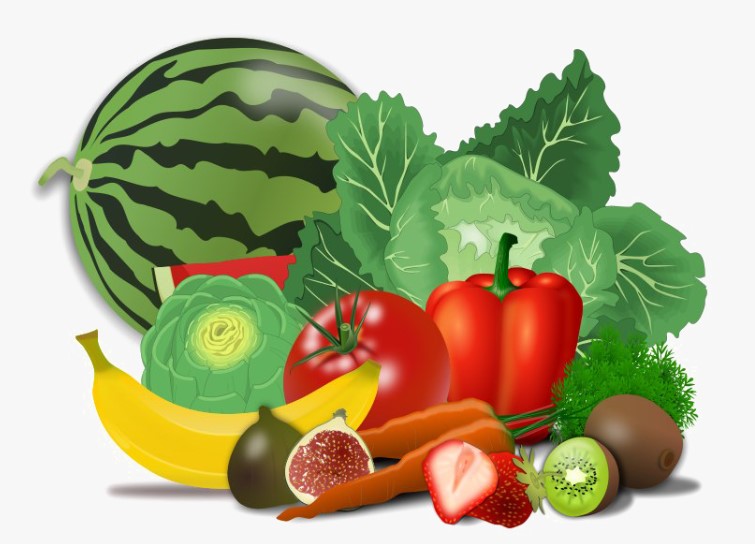
French Onion Soup

Ingredients:
3 Tbsp. olive oil
4 pounds yellow onions (about 5 large onions), thinly sliced
Kosher salt
1 1/2 tsp. all-purpose flour
1/4 c. cognac or dry white wine
2 32-oz containers low-sodium beef broth
2 bay leaves
6 large sprigs thyme, plus more for sprinkling
1 Tbsp. sherry vinegar
8 thin slices country bread
3 oz. Gruyère cheese, finely grated
Directions:
Heat oil in large, heavy stockpot on medium. Add onions and 11/2 teaspoons salt, reduce heat to low and cook, stirring occasionally, until onions are tender and have released their liquid, 10 minutes.
Increase heat to medium-high and continue cooking, stirring often and scraping bottom of pot, until onions are deep brown and caramelized, 40 to 50 minutes. If bottom of pot starts to get too dark, add 4 to 5 tablespoons water.
Sprinkle onions with flour and cook, stirring, 2 minutes. Stir in cognac and cook 1 minute. Add broth and herbs and simmer until reduced to about 8 cups, 18 to 20 minutes. Discard herbs and stir in vinegar.
When ready to serve, heat broiler. Arrange bread on rimmed baking sheet and sprinkle with cheese and some fresh thyme leaves. Broil in top third of oven until golden brown and bubbling, about 1 minute. Serve on top of soup.
Sausage and Squash Penne

Ingredients:
2 cups uncooked penne pasta
1 package (12 ounces) frozen cooked winter squash
2 tablespoons olive oil
3 cooked Italian sausage links (4 ounces each), sliced
1 medium onion, chopped
1/4 cup grated Parmesan cheese
1/4 teaspoon salt
1/4 teaspoon dried parsley flakes
1/4 teaspoon pepper
Optional: Minced fresh parsley and additional grated Parmesan cheese
Directions:
Cook pasta and squash according to package directions. Meanwhile, in a large skillet, heat oil over medium heat. Add sausage and onion; cook and stir until sausage is browned and onion is tender; keep warm.
Big Soft Ginger Cookies

Ingredients:
3/4 cup butter, softened
1 cup sugar, plus additional for rolling
1 large egg, room temperature
1/4 cup molasses
2-1/4 cups all-purpose flour
2 teaspoons ground ginger
1 teaspoon baking soda
3/4 teaspoon ground cinnamon
1/2 teaspoon ground cloves
1/4 teaspoon salt
Directions:
In a large bowl, cream butter and 1 cup sugar until light and fluffy, 5-7 minutes. Beat in egg and molasses. Combine the flour, ginger, baking soda, cinnamon, cloves and salt; gradually add to the creamed mixture and mix well.
Buttery Pull-Apart Garlic Knots

Ingredients:
Knots
1 cup whole milk, at room temperature
1 large egg, beaten
1 (1/4-ounce) package active dry yeast
4 cups all-purpose flour (about 17 ounces)
1 1/2 tablespoons granulated sugar
4 teaspoons kosher salt
1/2 cup unsalted butter (4 ounces), cubed and softened, plus more for greasing
1/4 cup finely grated Parmigiano-Reggiano cheese (about 1 ounce), plus more for garnish
Finely chopped fresh flat-leaf parsley, for garnish
Garlic Butter
3/4 cup unsalted butter (6 ounces)
1/3 cup garlic cloves, finely chopped
Directions:
Begin making the knots: Whisk together milk, egg, and yeast in the bowl of a stand mixer fitted with the dough hook attachment. Add flour, sugar, and salt; beat on low speed until a stiff dough forms, 1 to 2 minutes, stopping to scrape sides of bowl as needed. Gradually add softened butter, a few cubes at a time, beating on low until butter is mostly incorporated after each addition, 7 to 9 minutes total. Once all butter has been added, continue beating dough on low until smooth and elastic, 3 to 4 minutes.
Transfer dough to a lightly greased large bowl; cover with plastic wrap, and let proof in a warm place until doubled in size, 1 hour and 30 minutes to 2 hours.
Make the garlic butter: Melt butter in a medium saucepan over low. Add garlic; cook, stirring often, until golden brown, 10 to 12 minutes. Pour butter mixture through a fine wire-mesh strainer into a medium microwavable bowl; reserve garlic and strained butter separately.
Finish making the knots: Turn dough out onto a clean work surface; cut into about 30 (1-ounce) pieces. Roll each piece into an 8-inch-long rope; tie each rope into a knot. Roll knots in strained butter, letting excess butter drip off; arrange knots in an even layer in a 12-inch cast-iron skillet or 13- x 9-inch baking pan. Add reserved garlic to remaining strained butter; set aside.
Preheat oven to 375°F. Sprinkle knots evenly with Parmigiano-Reggiano; cover loosely with plastic wrap. Let proof in a warm place until almost doubled in size, 35 to 45 minutes. Uncover knots; bake until golden brown and an instant-read thermometer inserted in center of knots registers 190°F, 25 to 30 minutes.
Microwave reserved garlic butter on high in 10-second intervals until just melted, 20 to 30 seconds. Brush garlic butter evenly over warm knots. Garnish with Parmigiano-Reggiano and parsley. Serve warm.

6 Things Every Woman Should Know About Heart Health
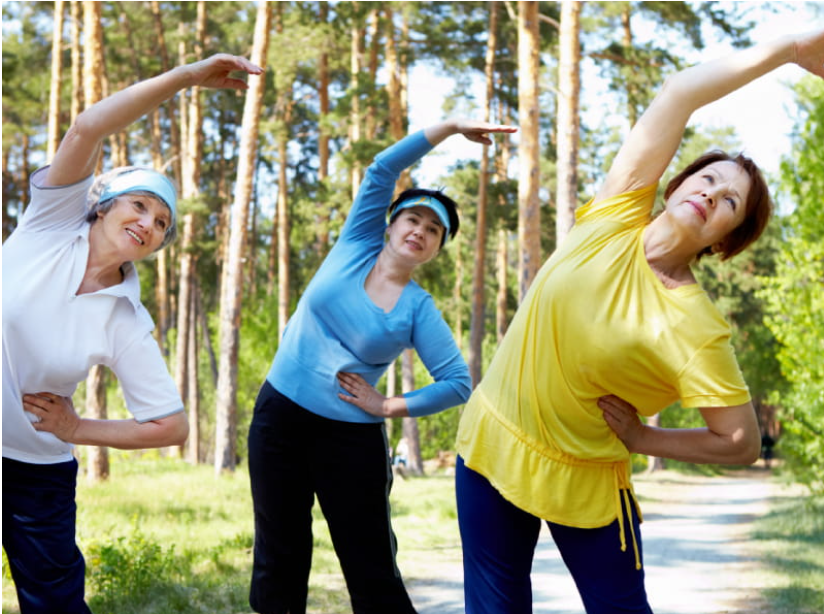
Article b:y American Heart Association News
Heart disease is the nation's leading killer of women. But paying attention to risk factors and living a healthy lifestyle can help keep heart disease at bay.
"It's an equal opportunity killer," said Dr. Jennifer Mieres, a professor of cardiology at the Zucker School of Medicine at Hofstra/Northwell in New York. "Women in mid-life are definitely at the highest risk. It's a volatile time for women, as the menopause transition is marked by changes in body composition, fat distribution and an increase in cholesterol levels."
Among women, 90% have one or more risk factors for heart disease at some point in their lives, according to American Heart Association statistics. Yet 80% of cardiovascular diseases are preventable.
Get annual checkups
It's important to get annual checkups to assess heart-health risk and take action, Mieres said. Prepare for the appointment, much as you would when gathering documents to meet with a financial adviser.
"You go to your accountant at tax time, and you don't show up empty-handed," she said. Be prepared to discuss any family history of heart disease or other concerns. "You should not be passive. You should have a conversation."
Become knowledgeable of your key health numbers, such as blood pressure, cholesterol and blood sugar levels. For example, blood pressure of less than 120/80 is considered normal.
Know the symptoms of a heart attack
Women's heart attack symptoms may cover a wider spectrum compared with symptoms in men. Women may experience the "classic" heart attack symptoms of chest pressure, chest discomfort or shortness of breath, just as men do.
"But women also may have symptoms such as back pain, usually on the left side; shoulder pain; a fullness in the stomach; or nausea as signs of an impending heart attack," cautioned Mieres.
Tell your doctor if you had a pregnancy complication
Recent research has focused on heart disease linked to pregnancy-related complications. Diabetes and hypertension during pregnancy as well as early delivery have been linked to increased cardiovascular disease risk years later.
"Pregnancy is a stress test" for the body, a possible marker for heart disease later in life, said Mieres.
Get enough sleep
Lack of sleep – getting less than six or seven hours a night – is connected to heart disease, research has shown. Poor sleep has been linked to high blood pressure, can make it difficult to lose weight and may make you less likely to want to exercise.
Tame stress
Chronic stress is another area of concern for women. It can lead to behaviors and factors that impact heart disease, such as high blood pressure, high cholesterol, inactivity and overeating.
To cope with stress, eat healthy foods, exercise and get plenty of sleep. Consider talking to others about your stress, including a friend, parent, doctor or counselor.
Find a health partner
In all heart-healthy efforts, it helps to have a partner in the endeavor, Mieres said.
Work with a health care provider to find a customized treatment plan that fits your daily life and medical needs. A friend, family member or co-worker also can be a good partner for getting physically active and sticking with a healthy eating plan.
"It's OK if you fall off the wagon. You have that person to help you get back on track," said Mieres. "There is strength in numbers."
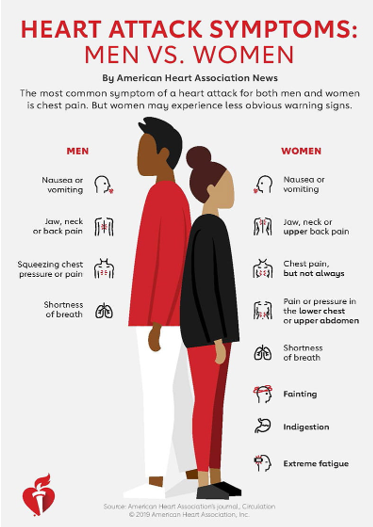

6 Practical Self Care Tips for Women

Self-care is the practice of taking time to care for your physical and emotional needs. As simple as it seems, many women tend to put their own needs on the back burner to care for others first.
As women, we often view self-care as an indulgence rather than a necessity for our health. Self-care is a practice that we don’t just deserve, we need it to operate at our best physically and mentally. If you’re ready to take better care of yourself, keep reading for 6 practical tips to maximize self-care for women.
Move Your Body Daily
Exercise has endless benefits for your physical and mental health. To keep yourself both healthy and happy, take time to move your body every day. Carving aside this time to honor yourself is such an important act of self-care that will remind you to respect and love your body.
Your movement may look different depending on the day - some days maybe all you need is a gentle walk around the neighborhood, while other days you can handle something more challenging like HIIT or strength training. Remember to listen to your body and adjust each day to your needs!
If you’re looking for workout ideas be sure to check out the Sunny Health & Fitness YouTube Channel for tons of free workouts that you can follow along to from home!
Indulge in Alone Time
Taking time for yourself is not selfish - it’s time to recharge. Alone time can be an important time to replenish and refill. It will give you time to process your thoughts and strengthen your sense of wellbeing.
When you spend time alone, you get to know and understand yourself more - which will not only increase self-love but also help you empathize and develop healthier relationships with those around you.
Pick Up a Creative Hobby
Creativity can be a great tool for many to help destress and boost your mood(1). Having a hobby can help break up the mundane in your routine and give you something to feel accomplished and excited about. If you’re feeling stuck in a rut, try picking up a hobby that sounds fun to you - like cooking, painting, reading, memory keeping, playing an instrument or sport, or community service. Whatever you choose, this is your time, so choose something that sounds the most fun for you!
Treat Yourself
Treating yourself might seem counterintuitive to a healthy lifestyle, however, it can also be highly rewarding and help you to foster joy in your regular routine. You don’t have to treat yourself with grand gestures, expensive investments, or even unhealthy indulgences; small and simple treats can be just as effective in adding joy to your day and recentering yourself. Start with something small, like picking up a nourishing smoothie or healthy meal after a workout, going to get your nails done, or pausing to treat yourself to a coffee on a rough day.
Make Sleep a Priority
Getting enough sleep will fill your daily power meter so that you not only have the energy to take care of yourself but others as well. If you’ve been feeling anxious or stressed - examine your sleep schedule. Have you been getting enough sleep?
Carving out that precious time for sleep may be easier said than done, but it’s definitely worth it! It’s no secret that some decent shuteye will make your hours during the day feel more productive, rested, and ready to put your best foot forward.
Value Your Self-Care Routine
Finally, value your self-care routine! Since self-care is such a fluid practice it can be tough to get into a regular routine. While a single relaxing bubble bath may lift your mood, it’s not enough to keep your cup filled.
It’s important to listen to your body, mind, and ever-changing moods to apply self-care practices into your day as needed; but it’s also important to schedule that time for yourself into your calendar. A good self-care routine requires planning and repetition. The structure of a regular self-care routine done right will help you feel safe, cared for, happy, and healthy.

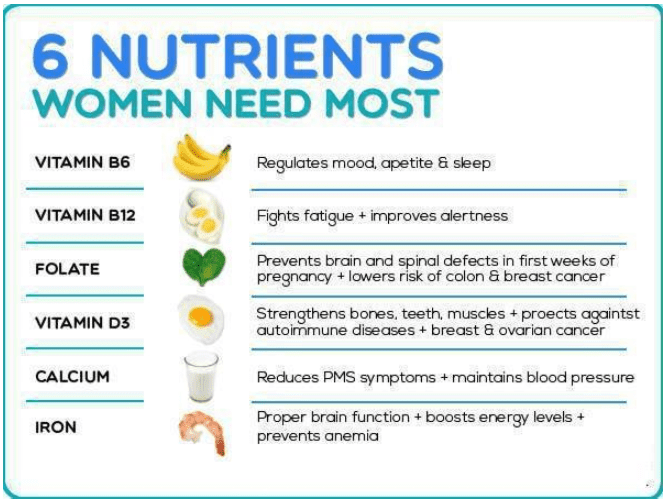

11 Tips to Help You Cope After a Breast Cancer Diagnosis

Article by: Kate Bayless
If you or a loved one has recently been diagnosed with breast cancer, you aren't alone. According to the American Cancer Society®, breast cancer is the most common form of cancer detected in women.
While any cancer diagnosis can be unsettling, there are a number of practical tips and strategies that you can use to support your physical and mental health and keep you strong on your cancer journey.
1. Connect With Your Feelings
Anger. Fear. Sadness. Hope. A breast cancer diagnosis can bring up a range of emotions. Taking time to become more in tune with your feelings and emotions can help you navigate them as you start your cancer journey.
Trying to maintain an optimistic outlook may provide a beneficial boost to your health.3 But it's also important to know that it's normal and expected to feel periods of grief, frustration or worry. Talking about your feelings with friends, family and your cancer care team can help you process the emotions as well as help those around you try to understand how to support you.
2. Make Time for Mindfulness
Cancer can be stressful. From the shock of the initial diagnosis to treatment and the impacts on day-to-day living, making time to slow down and be mindful of small joys and simple pleasures can have a big impact on your mental outlook. Mindfulness has been shown to decrease stress, anxiety and blood pressure and improve emotional regulation.
Mindful practices include any activity that cues our senses to pay attention to what's happening both inside us and around us. Some ideas:
Breathing exercises
Spending time in nature
Going for a walk
Caring for plants
Chewing food slowly
Savoring sight, sounds or smells you enjoy
Focusing on any single task completely
3. Lean on Your Tribe
While you may pride yourself on your self-reliance, a breast cancer diagnosis may eventually make it difficult to maintain some elements of your previous lifestyle. Turning to your tribe of friends and family can help with tasks of all kinds:
Shopping
Meal preparation
Household tasks
Transportation to and from appointments
Picking up medications
Caring for pets
Whether it's your childhood BFFs or a collection of neighbors, colleagues, cousins or college friends, leaning on your network during times of trial can not only help lighten your load but also empower them to support you during your cancer journey.
4. Join a Support Group
While your friends and family may offer valuable support, a breast cancer support group can put you in touch with people who truly understand what you're going through since they are going through it, too.
There are a variety of breast cancer support group options to choose from, including groups for those:
Recently diagnosed
Experiencing a recurrence
Undergoing certain kinds of breast cancer treatment
Of a certain gender or age group
From tips and advice to hearing stories of hope and survival, a support group can provide both practical and psychological support to help you stay positive.
5. Prioritize Self-Care Practices
For some, a breast cancer diagnosis, reactions to treatments and whether or not the cancer spreads can feel like a loss of control. While manicures and bubble baths won't take any of that away, they can help boost your mood and support your resilience. Self-care practices like journaling, music, massage, aromatherapy or beauty treatments have been found to help reduce stress, improve mental outlook and remind patients what they have power over.
6. Consider Professional Counseling
A breast cancer diagnosis not only impacts your physical health — it can also impact your family, finances, career and friendships. Seeking professional counseling or therapy can provide a safe space to share your feelings as well as learn strategies to implement to support you as you navigate the far-reaching changes that cancer can have.
While many individuals can benefit from such counseling services, if you have the following symptoms or moods that persist for more than two weeks or concern you, contact your healthcare team for a referral:
Feelings of sadness or hopelessness
Sleep issues
Fatigue
Heart palpitations
Difficulty concentrating
Disinterest in hobbies or activities you normally enjoy
7. Maintain Healthy Habits
It may be tempting to throw healthy habits out of the window in frustration if you've been diagnosed with breast cancer, but nutritious foods and regular exercise are important keys in providing your body with the physical energy to handle cancer treatments and the mental reinforcements to keep your mind positive.
For some people, cancer and its treatments can make eating more difficult or less enjoyable, so you may need to adjust your diet to ensure you are getting adequate protein, fat, carbs, vitamins and minerals.
Staying physically active after a cancer diagnosis can also offer a number of benefits to help your body and mind deal with the side effects of treatment:
Build stamina
Improve sleep quality
Decrease anxiety and depression
Strengthen the immune system
Increase appetite
8. Strengthen Your Spiritual Practice
While science hasn't found that spirituality or prayer can cure cancer, studies have suggested that strengthening your spiritual practice may result in reduced stress and anxiety and a more positive outlook in dealing with a breast cancer diagnosis.
One study reported that 92% of participants who had higher levels of spirituality demonstrated by participation in religious services, prayer and belief in a higher power showed improved mental health benefits.
9. Find a Cancer Mentor
While you may have only heard of mentors for spiritual or career growth, a cancer mentor can provide invaluable one-to-one assistance with emotional support, practical tips, resource suggestions and a true understanding of what you are going through.
According to the National Cancer Institute, cancer patients who utilize one-to-one mentors are more likely to complete cancer treatment, have higher survival rates, have lower recurrence rates and report an improved quality of life.
10. Spend Time With Pets
Spending time with your favorite furry friend may have benefits for your mental outlook after a breast cancer diagnosis. According to the American Psychiatric Association, 86% of both cat and dog owners report that pets have a positive impact on their mental health, including reducing stress, increasing a sense of calm and providing support and companionship.
While furry friends can offer a number of stress-reducing benefits, pet owners recently diagnosed with breast cancer may want to discuss pet safety with their healthcare team. Some pets may put cancer patients at an increased chance of exposure to viruses or infections. Certain cancer treatments like chemotherapy may also endanger pets who nose through the trash or sneak drinks out of the toilet.
Having a plan in place for taking care of a pet if you are away from home for treatment or too ill to care for them can help you feel at ease knowing your beloved pet will be taken care of.
11. Seek Out Survivor Stories
Another way to boost your morale after a breast cancer diagnosis is to seek out stories of breast cancer survivors. Research suggests that hearing stories, tips and advice from others who have navigated through a breast cancer diagnosis and treatment can help improve an individual's outlook on their own cancer journey, as well as provide valuable resources and practical coping strategies.13 Breast cancer survivor stories can be found online at Breastcancer.org, Susan G Komen or the National Cancer Institute, among others.

Wellness Tips for Fall

5 Ways to Give Your Health an Autumn Boost
As the leaves begin to change color and fall to the ground, it's a sign that autumn has arrived. For many of us, that means breaking out the cozy sweaters, enjoying warm drinks, and spending time outdoors surrounded by the beauty of nature. It's also a time to reflect on our health and take steps to improve our wellness.
Here are some tips to help you stay healthy and happy this autumn season:
Get a Health Checkup
As you prepare kids for their school physical, autumn is also a good time to schedule a physical exam with your own doctor. This is especially important if you haven't been to the doctor in awhile or if you have any health concerns. During your visit, your doctor can check your vital signs, screen for health conditions, and update your vaccinations.
Finding a Family Medicine Doctor
Whether it’s been a long time since your last appointment or you’re looking for a change — autumn is a great time to consider switching to a family doctor. A family doctor is a healthcare professional who provides comprehensive care for patients of all ages. Family doctors are trained to diagnose and treat various conditions, from common colds and flu to more serious illnesses. They also provide preventive care, such as vaccinations, and can guide healthy lifestyle choices.
Make Lifestyle Changes
This is the perfect time of year to make healthy lifestyle changes, such as starting an exercise routine, eating a healthier diet, or quitting smoking. These changes can help improve your overall health and reduce your risk of developing chronic health conditions. Especially with such beautiful weather to enjoy outdoors!
Eat Seasonal Foods
Seasonal fruits and vegetables are not only fresher and tastier, but they're also more nutrient-dense than out-of-season produce. Autumn fruits and veggies include apples, pears, pumpkins, squash, sweet potatoes, and dark leafy greens. Incorporating these into your diet can boost your intake of vitamins, minerals, and antioxidants.
Get Enough Sleep
With the change in season, your body may start to feel tired earlier in the evening. Make sure to get enough sleep by going to bed and waking up at the same time each day. Aim for seven to eight hours of sleep each night.
Take Care of Your Mental Health
The shorter days and cooler temperatures can sometimes lead to feelings of sadness or loneliness. If you find yourself feeling down, reach out to friends or family members, join a support group, or talk to a therapist. Additionally, find ways to relieve stress and express yourself — such as meditation, gardening, journaling, painting or yoga. Taking care of your mental health is just as important as taking care of your physical health.
Focusing on Social Wellness
In addition to focusing on stress-relief activities for yourself, it’s important to focus on your social wellness and stay connected to your community of loved ones. This can help you battle symptoms of seasonal depression and overall improve your mood. There are lots of ways you can work on improving your social well-being. Here are a few ideas:
Reflect on your own needs. The path to improving your wellness in any aspect is to determine what would improve your life. Starting by setting goals can improve your emotional health.
Reach out to friends and family members, even if you don't see them often. Staying in touch can help you feel more connected and supported.
Join a social or hobby group. This can help you meet new people and form new friendships.
Volunteer. Giving back to your community can help you feel good about yourself and connected to others.
Make time for social activities that you enjoy. Whether it's going out to eat, seeing a movie, or taking a walk, spending time with others can be enjoyable and good for your health!
By following these tips, you can enjoy a healthy and happy autumn season! From family medicine to internal medicine, our Primary Care Providers (PCP) at St. John's Health are here to openly listen to your concerns and work with you to achieve overall better health and wellness.

Day Primary Care Selected by Centers for Medicare & Medicaid Services
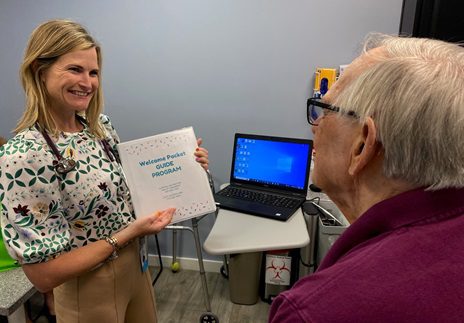
In Photo: Kelley Pekarsky, DNP, APRN, is the Clinical Navigator to help community members learn about the new GUIDE program at the Council on Aging Martin. The program assists individuals coping with dementia and their caregivers.
Stuart - The Council on Aging Martin’s Day Primary Care, a medical practice on its Kane Center campus, has been selected by the Centers for Medicare & Medicaid Services (CMS) to participate in a new Medicare alternative payment model designed to support people living with dementia and their caregivers.
Under CMS’ Guiding an Improved Dementia Experience (GUIDE) Model, Day Primary Care will be one of almost 400 participants building Dementia Care Programs (DCPs) across the country, working to increase care coordination and improve access to services and supports, including respite care, for people living with dementia and their caregivers.
Launched on July 1, 2024, the GUIDE Model will test a new payment approach for key supportive services furnished to people living with dementia, including comprehensive, person-centered assessments and care plans; care coordination; 24/7 access to an interdisciplinary care team member or help line; and certain respite services to support caregivers. People with dementia and their caregivers will have the assistance and support of a Care Navigator to help them access clinical and non-clinical services such as meals and transportation through community-based organizations.
“CMS is excited to partner with Day Primary Care under the GUIDE Model,” said CMS Administrator Chiquita Brooks-LaSure. “The GUIDE participants are envisioning new ways to support not only people living with dementia, but also to reduce strain on the people who care for them, so that more Americans can remain in their homes and communities, rather than in institutions.”
“We know how difficult it can be for individuals with dementia and their families to find the resources they need and to feel confident in the choices they’re making,” said Council on Aging Martin President and CEO Karen Ripper. “Our participation in the GUIDE model will enable us to bring our community even more ways of caring for loved ones with dementia and supporting their caregivers.”
Day Primary Care participation in the GUIDE Model will help people living with dementia and their caregivers have access to education and support, such as training programs on best practices for caring for a loved one living with dementia. The GUIDE Model also provides respite services for certain people, enabling caregivers to take temporary breaks from their caregiving responsibilities. Respite is being tested under the GUIDE Model to assess its effect on helping caregivers continue to care for their loved ones at home, preventing or delaying the need for facility care.
GUIDE Participants represent a wide range of health care providers, including large academic medical centers, small group practices, community-based organizations, health systems, hospice agencies, and other practices.
This model delivers on a promise in the Biden Administration’s Executive Order on Increasing Access to High-Quality Care and Supporting Caregivers and aligns with the National Plan to Address Alzheimer’s Disease. For more information on CMS’ GUIDE Model, please visit: https://www.cms.gov/priorities/innovation/innovation-models/guide.
Reilly Weidner
Account Executive – Spark Starter
The Firefly Group

Outdoor Fitness Classes
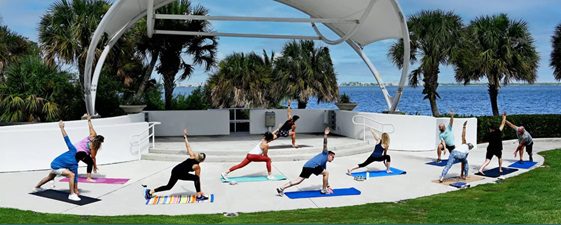
Pilates class at Indian Riverside Park in Jensen Beach.
Martin County Parks and Recreation is offering year-round outdoor fitness classes at our parks!
Our instructor will support participants' health goals through exercise in a safe and fun workout environment while offering a variety of modifications to accommodate participants of all ages and fitness levels.
Classes are $10 each. Online registration is required in advance of classes, and will be available until the morning of each class. Cash is not accepted.

Heart-healthy Diet: Steps to Prevent Heart Disease
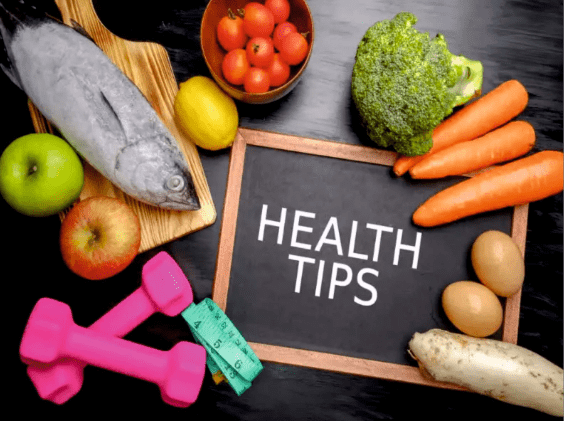
You might know that eating certain foods can raise your heart disease risk. Even though changing your eating habits can be tough, you can take simple steps to get started today. Whether you've been eating unhealthy for years or you simply want to fine-tune your diet, here are eight heart-healthy diet tips. Find out which foods to eat more of and which foods to limit. You'll soon be on your way toward a healthier diet for your heart.
Control portion sizes How much you eat is just as important as what you eat. Overloading your plate, taking seconds and eating until you feel stuffed can lead to eating more calories than you should. Portions served in restaurants often are larger than anyone needs.
Follow a few simple tips to control food portion size. These tips can help you shape up your diet as well as your heart and waistline:
Use a small plate or bowl to help control your portions.
Eat more low-calorie, nutrient-rich foods such as fruits and vegetables.
Eat smaller amounts of high-calorie, high-sodium foods. These include refined, processed and fast foods.
It's also important to keep track of the number of servings you eat. Keep these points in mind:
A serving size is a specific amount of food. It's defined by common measurements such as cups, ounces or pieces. For example, one serving of pasta is about 1/3 to 1/2 cup, or about the size of a fist. A serving of meat, fish or chicken is about 2 to 3 ounces. That's about the size and thickness of a deck of cards.
The recommended number of servings in a food group may vary. It depends on the specific diet or guidelines you're following.
Judging serving size is a learned skill. You may need to use measuring cups and spoons or a scale until you're comfortable with your judgment.
Eat more vegetables and fruits
Vegetables and fruits are good sources of vitamins and minerals. They're also low in calories and rich in fiber. Vegetables and fruits, like other plants or plant-based foods, contain substances that may help prevent heart disease. Eating more fruits and vegetables also may help you eat less higher calorie food. Some examples of high-calorie foods are meat, cheese and snack foods.
Getting more vegetables and fruits in your diet can be easy. Keep vegetables washed and cut in your refrigerator for quick snacks. Keep fruit in a bowl in your kitchen so that you'll remember to eat it. Choose recipes that have vegetables or fruits as the main ingredients. These include vegetable stir-fry dishes or fresh fruit mixed into salads.
Choose whole grains
Whole grains are good sources of fiber and other nutrients that play roles in heart health and controlling blood pressure. You can get more whole grains by making simple swaps with refined grain products. Or try a whole grain you haven't had before. Healthy choices include whole-grain farro, quinoa and barley. At least half of the grains you eat should be whole grains.
Limit unhealthy fats
Limit the amount of saturated and trans fats you eat. This helps lower your blood cholesterol and lower your risk of a common heart condition called coronary artery disease. A high blood cholesterol level can lead to a buildup of plaques in the arteries, called atherosclerosis. And that can raise the risk of heart attack and stroke.
Check the food labels of cookies, cakes, frostings, crackers and chips. These foods are low on nutrition. And some of them — even those labeled reduced fat — may contain trans fats. Trans fats can no longer be added to foods in the United States. But they could be in products made in other countries. Trans fats may be listed as partially hydrogenated oil on the ingredient label. Also, many of the partially hydrogenated fats or trans fats typically contained in desserts and snack foods have been replaced with saturated fats. So it's still a good idea to limit those foods.
When you use fats, choose unsaturated ones. There are two main types. Monounsaturated fats are found in products such as olive oil or canola oil. Polyunsaturated fats are found in certain fish and in avocados, nuts and seeds. When used in place of saturated fats, unsaturated fats may help lower your total blood cholesterol. But it's still important to limit how much of these fats you eat. All types of fats are high in calories.
An easy way to add healthy fat — and fiber — to your diet is to use ground flaxseed. Flaxseeds are small brown seeds that are high in fiber and healthy fats called omega-3 fatty acids. Studies have shown that flaxseed lowers unhealthy cholesterol levels in some people. You can grind flaxseeds in a coffee grinder or food processor. Then stir a teaspoon of the ground flaxseed into yogurt, applesauce or hot cereal.
Sodium is a mineral. It’s found naturally in some foods, such as celery or milk. Food makers also may add sodium to processed foods, such as bread and soup. Eating foods with lots of added sodium can lead to high blood pressure. So can using table salt, which contains sodium.

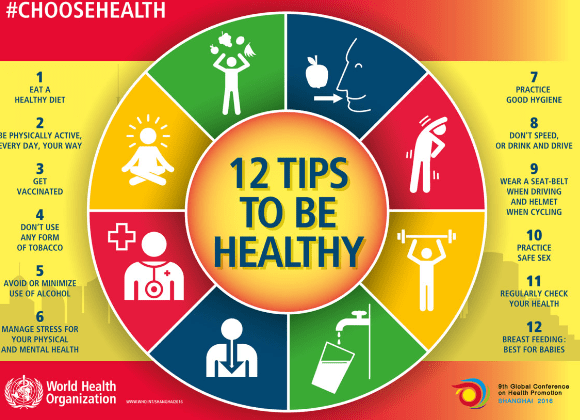

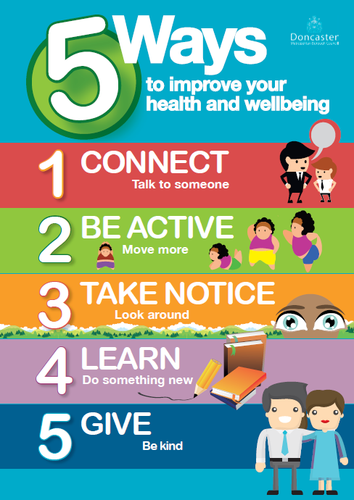

Fruits High in Vitamin C How They Benefit Your Body

Article by: Christina Manian, RDN
Also known as ascorbic acid, vitamin C is a water-soluble vitamin that’s often associated with boosted immunity. But this popular micronutrient positively influences our health in many more ways. And if you’re a fruit lover, you’re in luck, as some of the best sources of vitamin C are the most popular fruits. Read on to learn all about how vitamin C benefits our health, as well as some of the best sources—including plenty of delicious fruits.
How Does Vitamin C Benefit the Body?
Vitamin C is most known for its antioxidant properties, which means it supports the immune system through reducing inflammation and fighting off of free radicals. “Free radicals are unstable molecules naturally created by the body and from the environment—such as pollutants, cigarette smoke, pesticides, and UV radiation,” says Jessica G. Anderson, MS, RD, CSSD, LD, ACSM EP-C, Registered Dietitian Nutritionist at Top Nutrition Coaching. “Vitamin C is also required for collagen synthesis, L-carnitine (a chemical needed for metabolism) synthesis, formation of certain neurotransmitters, and protein metabolism, as well as formation and repair of connective tissue, muscle, bone and blood vessels,” Anderson continues.
These effects are so pronounced that vitamin C intake is associated with decreased risk for cancer, autoimmune diseases, cataracts, age-related macular degeneration, rheumatoid arthritis, heart disease, neurodegenerative diseases (like Alzheimer’s and Parkinson’s), the common cold, and premature aging of the skin, Anderson explains.
Oranges
It may not come as a shock to see oranges high on this list, as they often go hand-in-hand with vitamin C. In one medium orange, you’ll find 70 mg of the vitamin. This amount should be similar across all orange varieties available at the grocery store.
Guava
Though sometimes harder to find at the market, guava is a super source of immune-boosting vitamin C. In fact, one cup contains a whopping 376 mg! If you can’t find guava at your grocery store, guava juice will offer plenty of this micronutrient as well (check out the nutrition facts panel for the exact amount).
Kiwi
Kiwifruit, also known as kiwi, is not only juicy and tartly delicious, but super nutritious, containing fiber and a handful of micronutrients—including vitamin C. One medium kiwi offers an impressive 64 mg of the vitamin.
Strawberries
Strawberry season is right around the corner. Even if you aren’t able to snag some local strawberries, they’re found in pretty much every grocery store year-round—either fresh or frozen (though they may not taste as sweet). In just half a cup you’ll find 49 mg of vitamin C.
Papaya
This tropical fruit is another one that can be tricky to locate, but papaya is a fantastic source of vitamin C, nonetheless. There’s 88 mg in one cup of cut papaya, and equally high amounts of the vitamin in many 100 percent fruit juices containing it.
Cantaloupe
Few things are as wonderful as cantaloupe slices during peak harvest season. But this sweet, juicy melon is not only super yummy, it’s loaded with nutrients—like vitamin C. One cup contains 58 mg, helping you to meet your daily requirements.
Grapefruit
Though grapefruit’s bitter taste can be off-putting for some, many start every morning with this large citrus fruit. Half of a medium grapefruit boasts 39 mg of vitamin C whereas, ¾ cup grapefruit juice offers a notable 70 mg.
Apples
Few fruits are as readily available as the humble apple, making it an excellent grab when you need to boost your fiber (and vitamin C) intake for the day. Regardless of the type, one medium apple contains a modest (but still impactful) eight mg of vitamin C.
Pineapple
As one of the most affordable tropical fruits at the grocery store, pineapple is full of nutrients, including fiber, vitamin B6, magnesium, iron, and calcium. It’s also a super source of vitamin C, with 79 mg in one cup.
Cherries
A snack time favorite, cherries offer the perfect pop of sweetness to satisfy you until your next meal. It’s just an added bonus that they’re packed with nutrition, including vitamin C. In one cup of pitted sour cherries, you’ll find 15 mg of the vitamin. But acerola cherries are a stupendous source, with upwards of 1,000 mg in the same serving.

Good Nutrition is Essential for Good Health
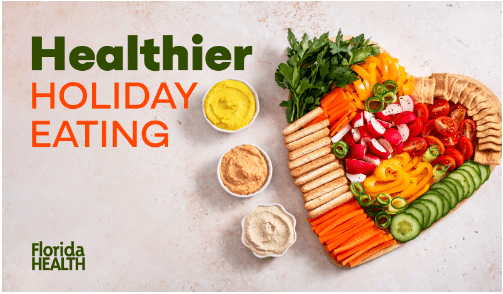
Your health is important no matter what time of year it may be. People with healthy eating habits live longer and are at lower risk for serious health issues such as heart disease, type 2 diabetes, and obesity.
For people with chronic diseases, healthy eating can help manage these conditions and prevent complications. Healthy eating is one of the biggest factors in having better health overall.
Preventing Diabetes
Diabetes affects millions of people in the U.S. Not only does it alter an individual’s health, but it touches the lives of friends and families, and creates financial pressure on many households.
Having diabetes means having multiple challenges when it comes to engaging in daily routines and living with the overarching fact that all people with diabetes must face: If you have diabetes, you have a higher chance—sometimes twice as high—of having cardiovascular disease, stroke and even depression.
Now is the time to reach out to your county health department for healthy eating strategies and find information and resources on for diabetes prevention and management:
Healthier You
American Diabetes Association
National Diabetes Program
Take Steps to Prevent Pre-Diabetes and Lower Your Chances for Heart Disease and Stroke
Prediabetes is when your blood sugar levels are higher than normal—you don’t have type 2 diabetes, but you’re getting close. Approximately 96 million American adults have pre-diabetes and more than 80% don’t know they have it. Those may be big numbers, but the good news is that you can prevent or delay pre-diabetes:
Talk to your health care provider about your specific risks and ways to avoid life threatening conditions.
Move more starting with 30 minutes a day, 5 days a week.
Stop smoking or using tobacco products.
Avoid sugary drinks and drink more water.
Eat healthy meals and pay attention to the quality of food you eat.
Manage your stress.
Improve your sleeping habits.
Take Extra Steps and Try New Recipes
When you do the work to prevent diabetes or live well with the disease you are also taking care of yourself for a longer, healthier life. The choices of regular exercise and healthier food that can prevent and manage diabetes, are the same healthier choices that can work for everyone, every day.
During the holiday season, don’t put a pause on making good choices. Start new traditions such as taking a morning or after-meal walk (or both) and preparing healthier food options.
Don’t Take a Holiday From Exercise

When the holiday rush is in full gear, there’s plenty to do—from attending gatherings to tracking down last-minute gifts. No wonder you might struggle to stick to your exercise regimen, like a lot of us do this time of year.
These suggestions may help keep you moving from turkey day through the new year:
Turn mall shopping into mall walking. When you head to the shopping center, bring your gift list—and your walking shoes. Try walking briskly from store to store.
Get in a mini workout. Don’t have time for a 30-minute routine? Try exercising in short bursts, whenever you have a few minutes to spare. Maybe that’s five minutes of jumping jacks, leg lunges or jogging in place.
Plan active holiday gatherings. Invite friends and family to go on walks to look at holiday decorations. Play a game of touch football after you put away the holiday leftovers. Have a friendly snowball fight—or a distance-throwing contest.
Make your bedroom a mini gym. Are your guests staying in the room where you normally work out? Try exercising in your bedroom before everyone wakes up. Choose activities that don’t require much space, such as working with hand weights or doing calisthenics.
Headed home for the holidays? Pack some portable workout gear. You can usually fit stretchy resistance bands, jump ropes and light hand weights in luggage or car trunks. Or bring your laptop and stream some workout videos. If there’s a gym near your destination, you might call ahead and ask if they offer day passes you can use.
Remember your reasons for moving. Exercising regularly is one of the healthiest things you can do. As a bonus, it can relieve holiday stress and boost your energy and your mood—all while helping you burn off extra calories from holiday treats.
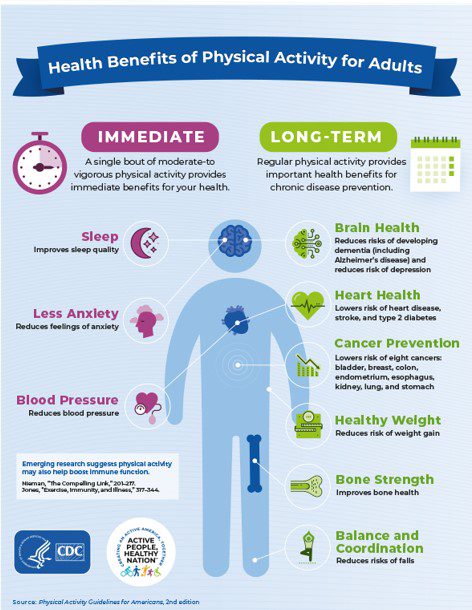
Health-Boosting Effects of Drinking Lemon Water

Warm lemon water mugStarting your day with warm lemon water can offer significant health benefits. First, it’s a rich source of vitamin C, which is crucial for the immune system, aiding in the fight against colds and flu. It also helps to rejuvenate skin from within, leading to a radiant glow.
Secondly, the pectin fiber in lemons assists in fighting hunger cravings. This can lead to weight loss as you’re less likely to snack on unhealthy foods throughout the day.
Lastly, warm lemon water aids digestion. The atomic structure of lemon juice is similar to the digestive juices found in the stomach, tricking the liver into producing bile, which helps keep food moving through your body smoothly.
Incorporating warm lemon water into your daily routine may be a small change, but its effects can be genuinely transformative.
Another great way to help elevate your health is with chiropractic care. Book an appointment today.

OUT2NEWS December 2024 Live a Healthy Lifestyle Why It’s Important

Life can be unpredictable, hectic and messy. We don’t always have the time to do the things we really want to do or the things we know we should. But prioritizing the things that truly matter will help you lead a life you love in every decade.
Aging is a part of life, but that doesn’t mean you have to let your health fade away with time. Taking care of your body and mind can help you continue to enjoy the opportunities that life can bring.
Read on to learn the importance of a healthy lifestyle and the steps you can take to make your own healthy lifestyle a reality.
What is a healthy lifestyle?
A healthy lifestyle is a way of living your life that helps you feel good physically, mentally and emotionally. This can mean a lot of different things and look a lot of different ways for each unique person. You get to decide what a healthy lifestyle looks like for you, but there are a few things that should be a part of every lifestyle to make it healthy.
Because healthy looks different for everyone, you can’t always tell if someone is healthy or not based solely on their physical appearance.
Why is a healthy lifestyle important?
When we take care of our mind and body, we can feel our best and seize the possibilities of life. Sometimes it helps to identify your own unique “why.” Whether you want to run a marathon or around the block, keep up with your kids or stay independent into your later years, a healthy lifestyle is built on your answer to that “why” question and the goals you set from it.
As you think about all the things you can do to create a healthy lifestyle, consider your reasons behind it. Eventually, this can help you identify your intrinsic motivation, or the drive to do, see and accomplish things that comes from within yourself. Intrinsic motivation leads to more long-term dedication and can help you keep going when the going gets tough.
The benefits of a healthy lifestyle
A healthy lifestyle, while it may seem restrictive, can actually help you live your life to its fullest, whether you’re 16 or 60. Age is truly just a number, and the benefits of a healthy lifestyle keep increasing as we age. Healthy living can help you:
Preserve your energy levels
Avoid disease and pain
Maintain a good mood
Keep life fun
Health starts in the kitchen with the choices we make on what to eat.
at fruits and vegetables. Try to aim for about five servings every day. At each meal, fruits and vegetables should fill half your plate. This does not mean you have to be eating them raw. There are so many delicious ways to cook and consume your daily servings of fruits and vegetables. Steamed, boiled, sauteed, tossed with olive oil and spices and roasted – you can experiment to discover how you find them tastiest.
Stick to whole grains. Eat carbohydrates with whole grains as the first ingredient, like whole grain bread, pasta and tortillas, and brown rice. Whole grains are nutrient-rich and will help you feel full for longer.
Vary your protein intake. The protein in your diet can come from plants as well as animal products. Beans, lentils, tofu and nuts are packed with protein and often contain significantly less harmful fats than most red meat. Eating more plant-based protein rather than animal-based protein helps to avoid cardiovascular diseases such as heart disease, diabetes, high blood pressure and stroke.
Avoid sugary drinks like sodas. Diet sodas, while they may seem like a good alternative, are usually full of chemicals that can be just as harmful as sugar. Opt for drinking mostly water, followed by unsweetened coffee and tea.
Not everyone likes running – and that’s okay! Don’t force yourself to pursue exercise that you don’t enjoy, because that’s a sure way to make it into a chore. There are so many other ways to move your body, whether cycling, swimming, dancing, weightlifting, doing yoga, playing tennis or basketball, skiing or hiking. Try out different exercises until you find one that you love. Because if you love it, you’ll want to stick with it.
Here are other ways to lead an active lifestyle:
Choose a workout buddy. If someone is counting on you to meet them at the gym for a workout or at the park for a run, you’re more likely to commit instead of letting them down.
Make the most of your gym membership. Attend fitness classes at your local gym or see if it has a personal training program. The company that other people provide can make working out more enjoyable.
Take small steps at first. Set goals that are reasonable and make sense for your life. If you’ve never run before, maybe sign up for a 5k race before you sign up for a marathon. Celebrate those small wins and achievements to keep you motivated.
It can be frustrating to get the recommended seven to nine hours of sleep and still feel tired. If you’ve ever wondered about improving the quality of your sleep, you may have heard the term “sleep hygiene.” Sleep hygiene refers to healthy habits that make your sleep the most restful it can be.
Keep yourself physically healthy. Exercise, a healthy diet and plenty of restful sleep can put you in the best position to meet whatever challenges life throws your way.
Take a break from the news. Our modern, 24-hour news cycle exposes us to a constant stream of distressing information. Give yourself time to process the stories you’ve already seen and read by unplugging for a while.
Don’t compensate with food, drugs or alcohol. These substances can become unhealthy quickly when used as coping mechanisms. Instead, try meditation, breathing exercises or physical activity when you’re feeling stressed.
Talk with someone you trust.
Reach out to friends and family. When we stop taking an active role in our social life, we can feel more alone than we actually are. Try to schedule at least one social get-together each week, whether meeting for coffee, going to dinner, taking a walk or just chatting on the phone.
Volunteer, take a class or join a club based on your hobbies. These are great ways to learn new skills and make new connections with people who share your interests. They also create scheduled time that gets you out of the house, or if online, time that puts you in contact with others.
Adopt a pet. Animals offer great companionship at home, and dogs – because they require regular walks and exercise – will get you out and about in your neighborhood. They can create great opportunities to meet other dog owners and animal lovers.

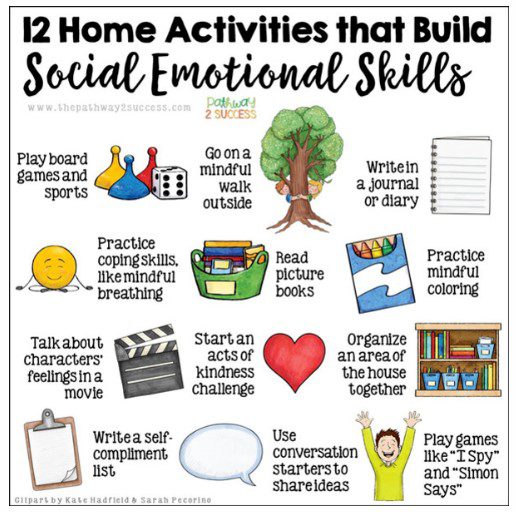


Rethink Your Drink
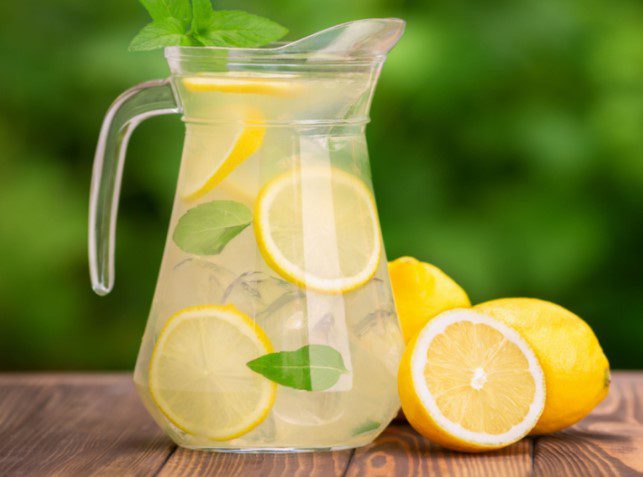
The next time you go grocery shopping, read the nutrition labels on the items in your cart to see which ones have the most added sugars. You may be surprised to see the amount of added sugars in some drinks.
Sugary drinks are the leading source of added sugars in the American diet. These sweetened liquids include regular soda, fruit drinks, sports drinks, energy drinks, and sweetened waters. The flavored coffees we grab on the way to work and sweet drinks we order when eating out also count as sugary drinks. Adding sugar and flavored creamer to coffee and tea at home counts, too.
Amount of Sugar and Calories in Common Drinks
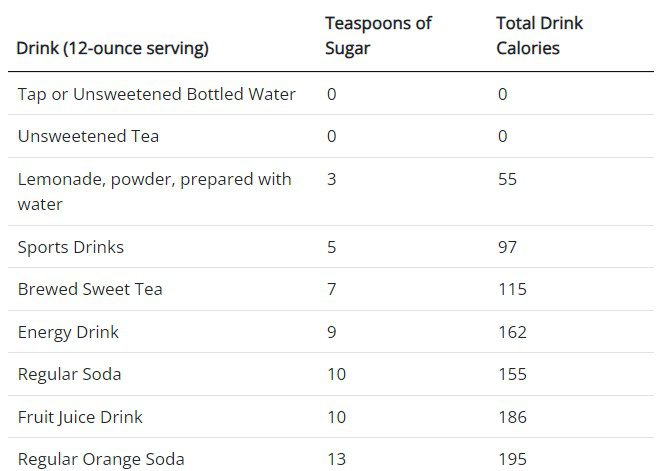
Why Should I Be Concerned About Sugary Drinks?
People who often drink sugary drinks are more likely to face health problems, such as weight gain, obesity, type 2 diabetes, heart disease, cavities, and gout, a type of arthritis.
The latest guidelines recommend that people 2 years and older keep their intake of added sugars to less than 10% of their total daily calories. For example, in a 2,000 calorie diet, no more than 200 calories should come from added sugars. Two hundred calories is about 12 teaspoons of added sugar in food and beverages combined. A 12-ounce regular soda has more than 10 teaspoons of added sugar, adding up to about total 150 calories. CDC research found about 30% of Americans ages two and older eat and drink high amounts of added sugar each day. Cutting out 2 regular sodas per day would reduce total calories by 2,100 in a week.
Tricks to Rethink Your Drink

Choose water (tap or unsweetened, bottled, or sparkling) over sugary drinks.
Need more flavor? Add berries or slices of lime, lemon, or cucumber to water.
Missing fizzy drinks? Add a splash of 100% juice to plain sparkling water for a refreshing, low-calorie drink.
Need help breaking the habit? Don’t stock up on sugary drinks. Instead, keep a jug or bottles of cold water in the fridge.
Water just won’t do? Reach for drinks that contain important nutrients such as low fat or fat free milk; unsweetened, fortified milk alternatives; or 100% fruit or vegetable juice first.
(NOTE: Before infants are 12 months old, do not give fruit or vegetable juice. Juice after 12 months old is not necessary, but 4 ounces or less a day of 100% juice can be provided.)
At the coffee shop? Skip the flavored syrups or whipped cream. Ask for a drink with low fat or fat free milk, an unsweetened milk alternative such as soy or almond, or get back to basics with black coffee.
At the store? Read the Nutrition Facts label to choose drinks that are low in calories, added sugars, and saturated fat.
On the go? Carry a reusable water bottle with you and refill it throughout the day.
Still thirsty? Learn how to drink more water.
Remember that you can be a role model for your friends and family by choosing water and other healthy, low-calorie beverages.
A Note About Energy Drinks
Energy drinks are often marketed as products that increase energy. In addition to added sugar, these products may also contain large amounts of caffeine and other legal stimulants. Concerns have been raised about the potential health risks of these products, especially for young people. If you’re looking for a quick pick-me-up, alternatives to energy drinks include:
Plain or unsweetened flavored water. Dehydration is often a reason for low energy.
Unsweetened tea. A number of tea flavors are available in naturally caffeinated varieties that can be enjoyed hot or cold.
Hot or iced coffee.
100% fruit or vegetable juice. There are many types of juices and juice combinations. Find one that you enjoy!
Whole fruit. Sometimes a snack can give you as much of a boost as a drink.
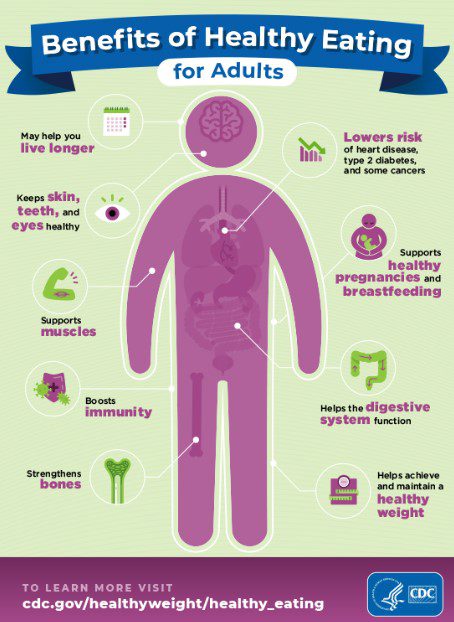
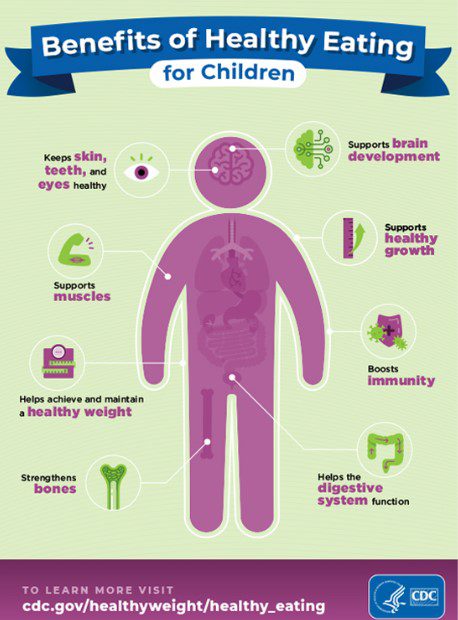

Three Things to Keep Out of Your Coffee
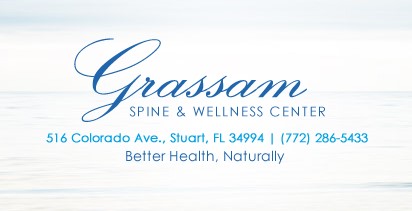

Coffee is a staple in many people’s morning routines, but some additives can zap your energy levels and cause negative side effects.
Here are three things to avoid putting in your coffee if you’re looking to avoid the jitters and crash.
Artificial Sweeteners – Artificial sweeteners like aspartame and sucralose can lead to a host of unpleasantries–some people with sensitivities may experience headaches and digestive problems. Instead of artificial sweeteners, try adding natural sweeteners such as honey or maple syrup.
Creamers – Creamers often contain ingredients like hydrogenated oils and high fructose corn syrup which may lead to weight gain and other health issues. Instead of creamers, try adding almond milk or coconut milk for a creamy texture without the added sugar.
Flavored Syrups – Flavored syrups may taste good, but they are packed with sugar and artificial ingredients. Instead of flavored syrups, try adding fresh fruit or spices such as cinnamon or nutmeg for a natural flavor boost without all the added sugar.
If you’re looking for an energy boost without the caffeine jitters, there are plenty of healthy alternatives to coffee that can give you the same pick-me-up without all the negative side effects. Some great options include matcha tea, golden milk lattes, chicory coffee, apple cider vinegar drinks, fresh juices and smoothies, and kombucha drinks or herbal teas.
Chiropractic care is another great way to naturally boost energy levels by helping your body function as designed!
Ready to book an adjustment? Contact our practice today-we look forward to seeing you in the practice soon.
Understanding Sciatica and Chiropractic Care


Sciatica is a common condition that causes pain, numbness, or weakness in the buttocks and legs. The condition affects millions of people worldwide, and many find relief through chiropractic care.
What Is It?
Sciatica is caused by a pinched or irritated sciatic nerve, which runs from the lower back through the hips, buttocks, and down each leg. The nerve can become compressed for a variety of reasons, including herniated discs, spinal stenosis, or degenerative disc disease.
Symptoms of sciatica include pain that radiates from the lower back down the leg, tingling or numbness in the leg or foot, and muscle weakness in the affected leg.
In our practice, we help sciatica patients through non-invasive and drug-free methods. Chiropractic care for sciatica typically involves adjustments, which may help to relieve pressure on the sciatic nerve and reduce inflammation in the affected area.
In addition to adjustments, we may also recommend other complementary therapies to help alleviate symptoms and prevent future flare-ups. These may include exercises to improve flexibility and strengthen the muscles that support the lower back, as well as lifestyle modifications like weight loss, improved posture, and stress reduction techniques.
Ready to Learn More?
If you are experiencing sciatica symptoms like lower back pain, leg pain, or numbness, chiropractic care may be the solution you’ve been searching for. Contact our practice to schedule an appointment and learn more about how care can help you find relief from sciatica symptoms.
Remember, early intervention is key when it comes to sciatica, so don’t delay in seeking care if you suspect you may be suffering from this condition.
We look forward to seeing you soon!
Dr. Lisa Grassam
Grassam Family Chiropractic
Appointments: (772) 286-5433

Healthy Diet Options for Men: By Age, Health and Goals

Article by: Adrienne Santos-Longhurst - Digital Writer
Did you know that your biological sex plays a role in weight loss? Differences in body composition, metabolism and even sociocultural gender factors influence everything from your food preferences and eating habits to how much weight men lose compared to women.1 To make choosing a diet even more complicated, there's also your age to consider as nutritional needs and health concerns change throughout your life.
To help you choose the right diet plan or weight loss program, we've rounded up the best diets for men at every age — whether you're looking to lose weight, gain muscle, improve your health or all of the above.
Diet for Overall Health: Mediterranean Diet
The Mediterranean diet isn't a specific diet, though you can find many books and websites dedicated to meal plans on this way of living that's based on the traditional eating habits of people in the countries bordering the Mediterranean Sea.
This style of eating fits into the healthy dietary patterns recommended by major health authorities, including the American Heart Association2 and the World Health Organization (WHO).3 Year after year, it continues to top the best diet lists.3
Eating a Mediterranean-style diet can help prevent stroke by reducing risk factors, including obesity, high cholesterol, high blood pressure and diabetes. This way of eating, which is traditionally rich in virgin olive oil, may even help remove excess cholesterol from arteries and keep blood vessels open.2
A Mediterranean diet is one that:
Emphasizes vegetables, fruits, whole grains, legumes and beans
Includes fish, poultry and low- or no-fat dairy products
Includes nuts and non-tropical oils, primarily olive oil
Limits sugary beverages, highly processed foods, saturated fats, refined carbohydrates and fatty meats
Diet for Weight Loss: Intermittent Fasting
Experts have long considered the best diet for weight loss to be a calorie-restricted diet. While counting calories and exercising is pretty much a surefire way to lose weight, a 2020 review of 27 studies showed intermittent fasting to be just as effective as a calorie-restricted diet. Participants lost between 0.8% and 13% of their body weight with no adverse effects reported.4
Intermittent fasting is less about what to eat and more about when you eat. By eating during a specific time period, you end up consuming fewer calories without having to track or count. It works because after hours without food, your body exhausts its sugar stores and begins burning fat.
There are a few different approaches to intermittent fasting, with one of the more popular options being the 16/8 method.5 To do this, you would:
Eat only during an eight-hour period and fast for 16 hours — for example, eating only between 11 a.m. and 7 p.m. every day.
Consume only calorie-free beverages during your 16 fasting hours, such as water, tea and black coffee.

Natural Solutions for Managing Knee Pain

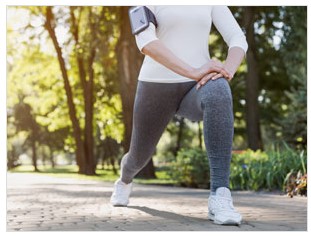
Knee pain isn’t something that has to happen as you age-in fact, it can affect people of all walks of life-from teens to athletes, adults, and seniors. Some of the most common causes include overuse, underlying medical conditions, osteoarthritis, patellar tendinitis, meniscal tears, and ligament injuries.
While medication and surgery may provide relief, natural solutions can also be effective. Stretching and exercise can help strengthen the muscles around the knee joint, reducing the risk of injury and improving mobility. Low-impact exercises such as swimming and cycling may be particularly beneficial. Maintaining a healthy weight is also essential in managing the condition.
Our team helps patients overcome knee pain by restoring proper joint alignment, which may reduce pressure on joints and improve range of motion. Find out if it can help you by booking a visit with us today.
Out2News.com LLC. is your Treasure Coast online newspaper, “Who they are, what they do and where they do it”?
Do you have something to say, an event to talk about? An event you would like to have covered. Do it here!
Email your story or request to: [email protected]
Out2News adheres to full compliance with C.O.P.P.A. (Children’s Online Privacy Protection Act of 1998)
“YOUR" Treasure Coast Newspaper & Photo Journal
Copyright © 2023 Out2News.com LLC. All Rights Reserved.
Can Poor Posture Cause Back Pain?


Older woman exercising The answer is a resounding yes! Why? When we sit or stand with improper alignment, we put extra stress on our spine and its surrounding muscles and ligaments. Over time, this can lead to pain, discomfort, and even injury.
Some common types of poor posture that can contribute to back pain include slouching, hunching over a desk or computer, and standing with an uneven weight distribution. Correcting poor posture can help alleviate back pain and prevent future issues.
As your partner in natural health, we can help identify and address postural imbalances through adjustments and corrective exercises. We also provide education on proper posture and ergonomics for daily activities to help prevent further pain and discomfort.
Don’t let poor posture contribute to your back pain – visit us if it’s something you’re looking to correct.
Out2News.com LLC. is your Treasure Coast online newspaper, “Who they are, what they do and where they do it”?
Do you have something to say, an event to talk about? An event you would like to have covered. Do it here!
Email your story or request to: [email protected]
Out2News adheres to full compliance with C.O.P.P.A. (Children’s Online Privacy Protection Act of 1998)
“YOUR" Treasure Coast Newspaper & Photo Journal
Copyright © 2023 Out2News.com LLC. All Rights Reserved.
The Importance of a Consistent Sleep Routine


As your chiropractor, we can’t stress enough the importance of a consistent sleep routine for your overall health and wellbeing. While many people focus on getting enough hours of sleep, it’s just as important to establish a regular sleep routine that helps your body get the most restorative sleep possible. Here are some key points to keep in mind when creating your sleep routine:
Stick to a consistent sleep schedule, even on weekends.
Create a relaxing bedtime routine that helps you unwind and prepare for sleep.
Make sure your sleep environment is comfortable, cool, and quiet.
Avoid stimulants like caffeine and electronic devices before bed.
Incorporate relaxation techniques like deep breathing or meditation to help you fall asleep.
By prioritizing a sleep routine, you may notice improvements in your mood, energy levels, and even your physical health. If you’re experiencing back pain that’s keeping you up at night, don’t hesitate to give us a call. We’ll do our best to get to the root cause of the issue and develop a care plan unique to your needs.
Out2News.com LLC. is your Treasure Coast online newspaper, “Who they are, what they do and where they do it”?
Do you have something to say, an event to talk about? An event you would like to have covered. Do it here!
Email your story or request to: [email protected]
Out2News adheres to full compliance with C.O.P.P.A. (Children’s Online Privacy Protection Act of 1998)
“YOUR" Treasure Coast Newspaper & Photo Journal
Copyright © 2023 Out2News.com LLC. All Rights Reserved.
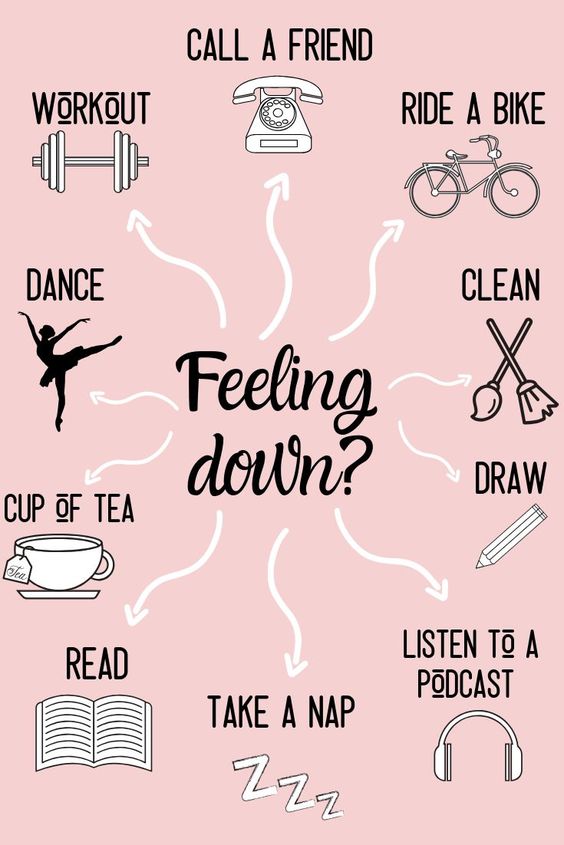
What’s Causing Your Headaches?

Article by: Healthy news and information from Grassam Family Chiropractic
Frequent headaches may be common, but they aren’t normal. If you suffer from them frequently, there are a few common causes that you should be aware of.
1. Dehydration: Dehydration causes your blood vessels to constrict, which can lead to pain.
2. Caffeine withdrawal: If you regularly drink caffeinated beverages and then suddenly stop, you may experience caffeine withdrawal headaches. These can be excruciating and may last for several days.
3. Skipping meals: If you go too long without eating, your blood sugar can drop, resulting in a headache.
4. Eye strain: Staring at a computer screen or other digital device for long periods of time can cause eye strain, resulting in a tense head and neck.
5. Spinal misalignments: Spinal bones that are out of alignment can cause pinched nerves and a host of health issues that often result in headaches. Find out how an adjustment can help by booking a visit with us.
For More Information Call Today:772-286-5433.
Out2News.com LLC. is your Treasure Coast online newspaper, “Who they are, what they do and where they do it”?
Do you have something to say, an event to talk about? An event you would like to have covered. Do it here!
Email your story or request to: [email protected]
Out2News adheres to full compliance with C.O.P.P.A. (Children’s Online Privacy Protection Act of 1998)
“YOUR" Treasure Coast Newspaper & Photo Journal
Copyright © 2022 Out2News.com LLC. All Rights Reserved.
7 Benefits of Custom Orthotics


Article by: Healthy news and information from Grassam Family Chiropractic
Custom orthotics are designed to support your feet in a way that helps improve your overall alignment and reduces stress on your joints. By doing so, they can help relieve pain throughout your body and improve your overall mobility.
There are many benefits of custom orthotics, including:
1. Relief from foot, knee, hip, and back pain
2. Improved alignment and posture
3. Increased stability and balance
4. Enhanced athletic performance
5. Reduced stress on joints
6. Increased comfort while standing, walking, or running
7. Prevention of foot conditions such as bunions and calluses
Dealing with foot pain? Find out how we can help! We look forward to seeing you in the practice soon.
We’re grateful to serve you and your family.For More Information Call Today:772-286-5433.
Out2News.com LLC. is your Treasure Coast online newspaper, “Who they are, what they do and where they do it”?
Do you have something to say, an event to talk about? An event you would like to have covered. Do it here!
Email your story or request to: [email protected]
Out2News adheres to full compliance with C.O.P.P.A. (Children’s Online Privacy Protection Act of 1998)
“YOUR" Treasure Coast Newspaper & Photo Journal
Copyright © 2022 Out2News.com LLC. All Rights Reserved.
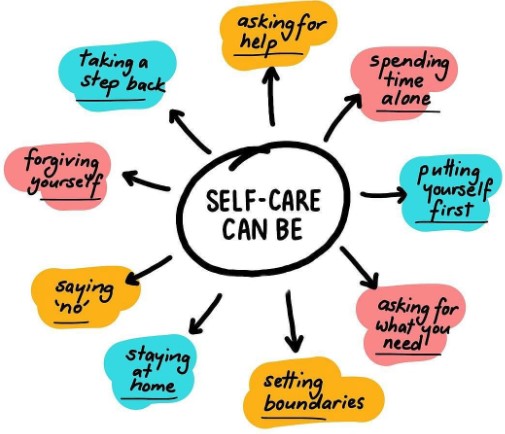
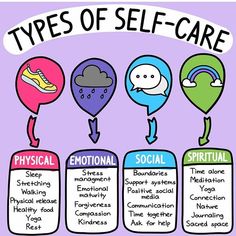
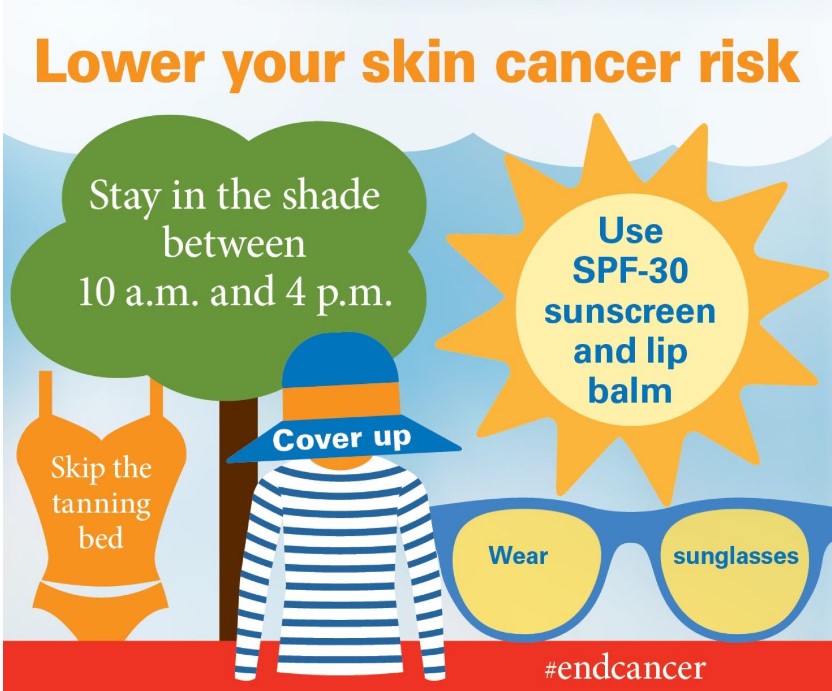


4 Remedies for Sciatic Pain

Article Courtesy Lisa Grassam - Grassam Spine & Wellness
Do you ever experience low back pain that sometimes radiates through your hips and legs?
While it can be grueling, there are a few ways you can manage the pain naturally and overcome it. As someone who wants the best for your health, give these tips a try and let us know how they work for you!
1. Stretch gently. While laying on your back, put one hand behind your knee and pull it toward your chest. Hold for 10 seconds and repeat.
2. Change your position. Sciatica can flare when you’ve been sitting in the same position for too long.
3. Stay moving. Go for walks to keep your body and spine mobile. This promotes circulation, which is necessary for healing.
4. Schedule a visit with us. We see patients every day who are dealing with sciatica. Let us develop a custom care plan for you so that your pain is a thing of the past.
5 Common Causes of Shoulder Pain

Article Provided by: Lisa Grassam - Grassam Spine & Wellness
Did you know that the shoulder is one of the biggest and most complex joints in the human body?
While a traumatic event or injury is typically the culprit of sudden shoulder pain, there are many other causes that can lead to tension and mobility issues.
Here are a few of the most common issues we see in the practice.
1. Rotator cuff injuries. This type of problem doesn’t always come from sudden trauma. In fact, years of wear and tear can lead to eventual rotator cuff tears. They typically occur in the dominant arm and are more common as you age.
2. Bursitis. All over your body, you have thin, sac-like structures called bursae, which helps to keep soft tissues from rubbing against your bones. Sometimes, bursa can experience too much friction, which leads to inflammation and ultimately, pain.
3. Arthritis. This can occur in any joint in the body. When a person experiences shoulder pain without a known injury, it may be caused by osteoarthritis or rheumatoid arthritis.
4. Frozen shoulder. Also known as adhesive capsulitis, this type of pain happens when the tissue surrounding the shoulder becomes tightened, which restricts movement and makes function difficult.
5. Spine problems. That pain you feel in your shoulder may not actually be caused by a problem in your shoulder. Herniated discs and misaligned spinal bones can cause pain to occur in the arms, hands, and even shoulder.
At our practice, we often work with patients struggling with shoulder pain through natural, gentle adjustments. If you’re interested in finding out more about how chiropractic care may help, contact us today.

How to Beat Headaches: Prevention Tips

Article Provided by: Lisa Grassam - Grassam Spine & Wellness
Did you know that 50-75% of adults experience at least one headache each year? Among those, roughly 30% have reported migraines. And as many as 4% of the world’s population are afflicted with headaches for 15 or more days every single month.
While most people focus on treating headaches after they happen, we’d like to offer some preventative tips to help you stop headaches from starting in the first place. In fact, we’ve helped many patients overcome headaches and migraines naturally through focused and gentle chiropractic care.
Here are a few tips for beating some of the most common types of headaches.
Cluster headaches: One of the most painful types of headaches, a cluster headache is typically felt on one side of the head near the eyes and lasts anywhere between 30 – 90 minutes on average. If you’re prone to cluster headaches, potential triggers may include bright lights, foods with nitrates like deli meats, a sudden altitude change, and alcohol or smoking. Try avoiding these triggers to see if your headaches improve.
Tension headaches: This type of headache doesn’t always throb, but instead feels like tightness or tenderness in the head and neck. To prevent a tension headache, take note of what you did just before the headache occurred. Sometimes, stress is a trigger, so practicing mindfulness or breathing exercises regularly may help.
Migraine headaches: Most research around migraine headaches points to environmental triggers, hormones, and genetics as the main culprits. Making sure you stay hydrated, avoid foods high in salt, and stick to a regular sleep schedule may help lessen their frequency. Other triggers may include bright fluorescent lights and strong smells.





















